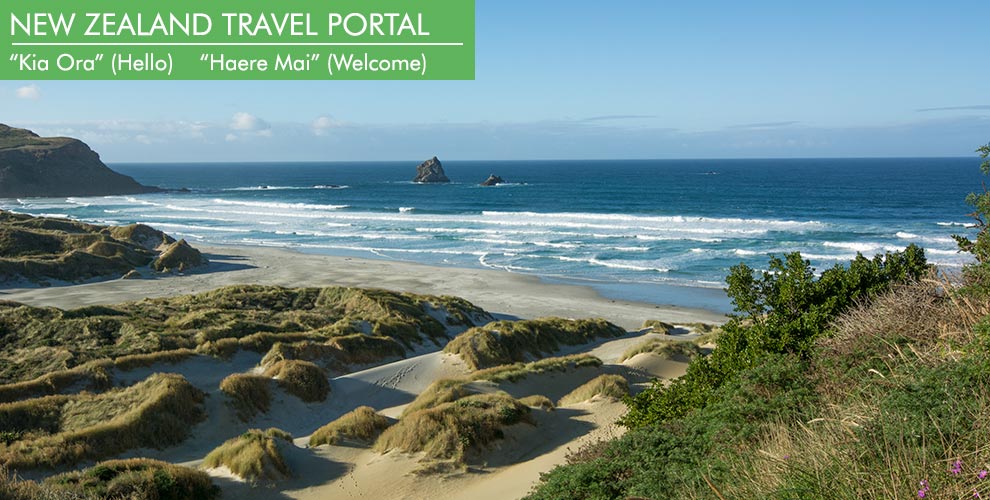
Travel Information
Topics like:
- Arrival in NZ – Visas, Permits, Entry Requirements
- Electricity
- Weather
- Ferry Service
- Destinations on the North Island
- Destinations on the South Island
All our New Zealand articles can be found here: New Zealand (www.travel1000places.com/tag/new-zealand/)
Time Zone & Daylight Saving Time
Is DST currently on or off? Please see that information on all our pages in the sidebar OR on our HOMEPAGE
Time Zone New Zealand
New Zealand Standard Time Is currently defined in the Time Act 1974 as meaning the 12 hours in advance of Co-ordinated Universal Time (UTC).
Daylight Saving Time (DST)
Since 2007/2008, Daylight Saving runs for a period of 27 weeks. It now commences from the last Sunday in September, when 2.00am becomes 3.00am, and ends on the first Sunday in April the following year, when 3.00am becomes 2.00am.
See also our page: New Zealand Time Zone and Daylight Saving Time
New Zealand Data & Facts, Visitor Info
Currency
New Zealand Dollar (NZD) [Current exchange rate NZD]
Goods and services tax (GST)
Goods and services tax (GST) is an indirect tax that businesses charge as part of the goods and services they provide. The current GST rate is 15.0 % (effective since 1st October 2010).
Visitors to New Zealand must pay GST on all goods and services that they buy in New Zealand.
There is no refund of GST available when you leave New Zealand.
Prices shown in shops and online include GST unless they say otherwise — the GST component of what you’ve paid is printed on your receipts.
Web: GST rate | New Zealand Government (www.govt.nz)
Capital
Population
4.035.461 (July 2005 est.)
4.605.676 (Aug 2015 est.)
4.890.000 (July 2018 est.)
5.158.000 (Nov 2021 est.)
Yearly change in %: under 1%
Population Clock of the Statistics Office NZ: www.stats.govt.nz/tools/population-clock
Land Area
Total: 268 680 sq.km. / 103 741 sq.mi.
Land: 268 021 sq.km. / 103 487 sq.mi.
Includes Antipodes Islands, Auckland Islands, Bounty Islands, Campbell Island, Chatham Islands, and Kermadec Islands
Coastline
15 134 km (9 406 mi)
Highest, Longest, Largest …
Highest Mountain
Aoraki – Mount Cook 3 754 m (12 316 ft)
Deepest Lake
Lake Hauroko (462 metres or 1 515 feet)
Largest lake
Lake Taupo (606 square kilometres or 234 square miles)
Longest river
Waikato River (425 kilometres or 264 miles long)
Largest glacier
Tasman Glacier (29 kilometres or 18 miles long)
Deepest cave
Nettlebed, Mount Arthur (889 meters or 2 916 feet) 15,811 kilometers or 9 824 miles
Independence
26-September-1907 (from the UK)
National holiday
Waitangi Day (Treaty of Waitangi established British sovereignty over New Zealand), 6 February (1840)
Public Holidays in New Zealand
Web: Public holidays and anniversary dates | New Zealand Government (www.govt.nz)
Government
Type
Parliamentary Democracy
Read more: New Zealand Government System
Embassies
Web: Embassies | New Zealand Ministry of Foreign Affairs and Trade (mfat.govt.nz)
Constitution
Consists of a series of legal documents, including certain acts of the UK and New Zealand Parliaments and The Constitution Act 1986, which is the principal formal charter
Prime Minister
The Prime Minister of New Zealand is the head of the government.
Wikipedia: https://en.wikipedia.org/wiki/Prime_Minister_of_New_Zealand
States
(=administrative divisions)
16 Regions (regional councils) and 1 Territory*:
Auckland, Bay of Plenty, Canterbury, Chatham Islands*, Gisborne, Hawke’s Bay, Manawatu-Wanganui, Marlborough, Nelson, Northland, Otago, Southland, Taranaki, Tasman, Waikato, Wellington, West Coast
These regions should not be mistaken with tourism-relevant region of which more than 20 exist.
Ethnic groups:
New Zealand European 74.5%, Maori 9.7%, other European 4.6%, Pacific Islander 3.8%, Asian and others 7.4%
Interesting Facts about New Zealand
A list with facts and events that you would’t guess: Interesting facts about New Zealand
New Zealand in a nutshell

New Zealand is part of Oceania and consists of two major islands in the South Pacific Ocean, approx. 1 600 km southeast of Australia.
New Zealand is slightly bigger than the UK and slightly smaller than Germany – it has with a total land area of 268 680 sq.km. / 103 741 sq. mi. approximately the size of the state of Colorado, USA.
The two islands are usually referred to as the North and the South Island. New Zealand has a coastline of 15 134 km (9 406 mi) and the elevation ranges from sea level up to 3 754 m / 12 316 ft (Aoraki-Mount Cook). Generally spoken the terrain is predominately mountainous with some large coastal plains.
Continue reading:
New Zealand in a nutshell

